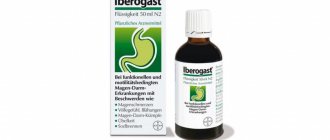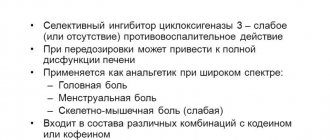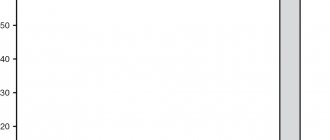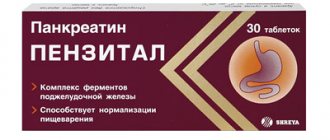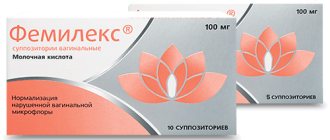Directions for use and doses
Inside.
For adults and adolescents aged 12 years and older, the drug is prescribed once a day at a dose of 5 mg (1 tablet). It is recommended to take the drug at the same time of day, regardless of meals, with a small amount of water. The tablet should be swallowed whole without chewing.
For chronic renal failure and liver failure, adjustment of the dosage regimen is required: an initial dose of 5 mg is recommended to be taken every other day (according to pharmacokinetics data). Recommendations for dosing in children with chronic renal failure and liver failure are not available due to insufficient data.
Lordestin 5 mg No. 30 tablets
Lordestin
Compound
Each film-coated tablet contains desloratadine 5.0 mg
Pharmacotherapeutic group: antiallergic agent, H1 - histamine receptor blocker.
Pharmacological properties
Pharmacodynamics
A blocker of H1-histamine receptors, it is the primary active metabolite of loratadine. Suppresses the release of histamine and leukotriene C4 from mast cells. Prevents the development and facilitates the course of allergic reactions. It has antiallergic, antipruritic and antiexudative effects. It has virtually no sedative effect and, when taken in therapeutic doses, does not affect the speed of psychomotor reactions.
Pharmacokinetics
After taking the drug orally, desloratadine is well absorbed from the gastrointestinal tract (GIT), and detectable concentrations of desloratadine in the blood plasma are achieved within 30 minutes. The binding of desloratadine to plasma proteins is 83-87%, and 3-hydroxydesloratadine is 85-89%. No accumulation of desloratadine was detected. Concomitant food intake or concomitant consumption of grapefruit juice does not affect the bioavailability or distribution of desloratadine. Does not penetrate the blood-brain barrier (BBB).
It is extensively metabolized in the liver to 3-hydroxydesloratodine. The main route of metabolism of desloratadine is hydroxylation. It is not an inhibitor of CYP3A4 and CYP2D6 isoenzymes. Desloratadine is excreted from the body in the form of a glucuronide compound and in small amounts unchanged (by the kidneys - less than 2% and through the intestines - less than 7%). The half-life for both desloratadine and 3-hydroxydesloratadine is 20-30 hours (average 27 hours).
Indications
- seasonal allergic rhinitis (to relieve the following symptoms: sneezing, rhinorrhea, itching, nasal congestion; itching in the eyes, lacrimation, redness of the eyes; itching in the palate, cough);
-chronic idiopathic urticaria (skin itching and rash).
Directions for use and doses
Inside. For adults and adolescents aged 12 years and older, the drug is prescribed once a day at a dose of 5 mg (1 tablet). It is recommended to take the drug at the same time of day, regardless of meals, with a small amount of water. The tablet should be swallowed whole without chewing.
For chronic renal failure and liver failure, adjustment of the dosage regimen is required: an initial dose of 5 mg is recommended to be taken every other day.
Contraindications
-pregnancy;
- lactation period;
- hypersensitivity to the components of the drug.
-children up to 12 years old.
Side effect
The most common side effects: 1.2% - fatigue, 8% - dry mouth, 0.6% - headache.
special instructions
Use with caution in patients with severe renal impairment.
Interaction with other drugs
When used together with ketoconazole, erythromycin, azithromycin, fluoxetine and cimetidine, no clinically significant changes in plasma concentrations of desloratadine were detected. Lordestin does not enhance the inhibitory effect of ethanol on psychomotor function.
Impact on the ability to drive vehicles and operate machinery
There was no observed effect of Lordestin when used in recommended doses on the ability to drive vehicles and operate machinery.
However, given that patients may experience drowsiness, caution is advised if central nervous system side effects occur.
Overdose
In case of overdose, drowsiness is noted. Treatment: gastric lavage, activated carbon, symptomatic therapy. The drug is not eliminated by hemodialysis. The effectiveness of peritoneal dialysis has not been established.
Release form
Film-coated tablets, 5 mg. 10 tablets in a blister. 1 or 3 blisters with instructions for use in a cardboard box.
Side effect
The most common side effects: 1.2% - fatigue, 8% - dry mouth, 0.6% - headache.
Side effects according to post-marketing studies: dizziness, tachycardia, palpitations, abdominal pain, dyspepsia (including nausea, vomiting, diarrhea), hyperbilirubinemia, increased activity of liver enzymes, hepatitis, allergic reactions (skin rash, itching, urticaria, angioedema, anaphylactic shock), dysmenorrhea, fatigue, myalgia, hallucinations, psychomotor hyperreactivity, insomnia, drowsiness.
Lordestin
Manufacturer: GEDEON RICHTER-RUS CJSC (Russia)
◊ tab., cover. film-coated, 5 mg: 10 or 30 pcs. Reg. No.: LSR-006570/10
Clinical and pharmacological group:
Histamine H1 receptor blocker. Antiallergic drug
Release form, composition and packaging
◊ Film-coated tablets
yellow, round, biconvex; at the break - white or almost white.
| 1 tab. | |
| desloratadine hemisulfate | 5.788 mg, |
| which corresponds to the content of desloratadine | 5 mg |
Excipients:
microcrystalline cellulose, calcium hydrogen phosphate dihydrate, pregelatinized starch, colloidal silicon dioxide (Aerosil), magnesium stearate, opadry AMB yellow 80W22099 (partially hydrolyzed polyvinyl alcohol, titanium dioxide, talc, lecithin, aluminum varnish based on quinoline yellow dye, xanthan gum, iron oxide yellow, aluminum varnish based on indigo carmine dye).
10 pieces. — cellular contour packages (1) — cardboard packs. 10 pieces. — cellular contour packages (3) — cardboard packs.
Description of the active components of the drug "Lordestin"
pharmachologic effect
Histamine H1 receptor blocker. It is the primary active metabolite of loratadine. Suppresses the release of histamine and leukotriene C4 from mast cells. Prevents the development and facilitates the course of allergic reactions. It has antiallergic, antipruritic and antiexudative effects. Reduces capillary permeability, prevents the development of tissue edema. It has virtually no sedative effect and, when taken in therapeutic doses, does not affect the speed of psychomotor reactions.
Indications
- seasonal allergic rhinitis (to relieve the following symptoms: sneezing, rhinorrhea, itching, nasal congestion; itching in the eyes, lacrimation, redness of the eyes; itching in the palate, cough);
- chronic idiopathic urticaria (skin itching and rash).
Dosage regimen
Inside. Adults and teenagers aged 12 years and older
the drug is prescribed in a dose of 5 mg (1 tablet) 1 time/day.
It is recommended to take the drug at the same time of day, regardless of meals, with a small amount of water. The tablet should be swallowed whole without chewing.
For chronic renal and liver failure
correction of the dosage regimen is required: the initial dose of 5 mg is recommended to be taken every other day (according to pharmacokinetics data).
Dosing recommendations for children with chronic renal and liver failure
missing due to insufficient data.
Side effect
The most common side effects: fatigue (1.2%), dry mouth (8%), headache (0.6%).
Side effects based on post-marketing studies
.
From the side of the central nervous system:
dizziness, hallucinations, psychomotor hyperreactivity, insomnia, drowsiness.
From the cardiovascular system:
tachycardia, palpitations.
From the digestive system:
abdominal pain, dyspepsia (including nausea, vomiting, diarrhea), hyperbilirubinemia, increased activity of liver enzymes, hepatitis.
Allergic reactions:
skin rash, itching, urticaria, angioedema, anaphylactic shock.
Other:
dysmenorrhea, increased fatigue, myalgia.
Contraindications
- pregnancy;
- lactation period;
- children under 12 years of age;
- hypersensitivity to the components of the drug.
Carefully _
the drug should be prescribed for severe renal failure.
Pregnancy and lactation
The drug is contraindicated during pregnancy.
Since desloratadine is excreted in breast milk, the use of the drug during lactation (breastfeeding) is contraindicated.
Use for liver dysfunction
For chronic liver failure
correction of the dosage regimen is required: the initial dose of 5 mg is recommended to be taken every other day (according to pharmacokinetics data).
Use for renal impairment
For chronic renal failure
correction of the dosage regimen is required: the initial dose of 5 mg is recommended to be taken every other day (according to pharmacokinetics data).
special instructions
Impact on the ability to drive vehicles and operate machinery
There was no observed effect of Lordestin when used in recommended doses on the ability to drive vehicles and operate machinery. However, given that patients may experience drowsiness, caution is recommended if central nervous system side effects occur.
Overdose
In case of overdose, drowsiness is observed.
Treatment:
gastric lavage, activated carbon, symptomatic therapy. The drug is not eliminated by hemodialysis. The effectiveness of peritoneal dialysis has not been established.
Drug interactions
When used together with ketoconazole, erythromycin, azithromycin, fluoxetine and cimetidine, no clinically significant changes in plasma concentrations of desloratadine were detected.
Lordestin does not enhance the inhibitory effect of ethanol on psychomotor function.
Conditions for dispensing from pharmacies
The drug is approved for use as a means of OTC.
Storage conditions and periods
The drug should be stored out of the reach of children at a temperature not exceeding 25°C. Shelf life: 4 years. Do not use after the expiration date.
Drug interactions
When used together with ketoconazole, erythromycin, azithromycin, fluoxetine and cimetidine, no clinically significant changes in plasma concentrations of desloratadine were detected.
Lordestin does not enhance the inhibitory effect of ethanol on psychomotor function.
LORDESTIN film-coated tablets 5 mg No. 10
Lordestin is antiallergic. Pharmacodynamics of H1-histamine receptor blocker, is the primary active metabolite of loratadine. Suppresses the release of histamine and LT C4 from mast cells. Prevents the development and facilitates the course of allergic reactions. It has antiallergic, antipruritic and antiexudative effects. Reduces capillary permeability, prevents the development of tissue edema. It has virtually no sedative effect and, when taken in therapeutic doses, does not affect the speed of psychomotor reactions. Pharmacokinetics Absorption After taking the drug orally, desloratadine is well absorbed from the gastrointestinal tract, and detectable concentrations of desloratadine in the blood plasma are achieved within 30 minutes. After a single dose of 5 or 7.5 mg, Cmax is achieved in approximately 3 hours (2–6 hours). The bioavailability of desloratadine is dose proportional (dose range 5–20 mg). Distribution The binding of desloratadine to plasma proteins is 83–87%, and 3-hydroxydesloratadine is 85–89%. When used in a dose of 5 mg to 20 mg 1 time per day for 14 days, no signs of clinically significant accumulation of desloratadine were detected. Concomitant food intake or simultaneous consumption of grapefruit juice does not affect the bioavailability and distribution of desloratadine (when taken at a dose of 7.5 mg 1 time per day). Does not penetrate the BBB. Metabolism and excretion Extensively metabolized in the liver to 3-hydroxydesloratodine, which is then glucuronidated. The main route of metabolism of desloratadine is hydroxylation. It is not an inhibitor of CYP3A4 and CYP2D6 isoenzymes and is not a substrate or inhibitor of P-glycoprotein. Desloratadine is excreted from the body in the form of a glucuronide compound and in small amounts unchanged (by the kidneys - less than 2% and through the intestines - less than 7%). T1/2 for both desloratadine and 3-hydroxydesloratadine is 20–30 hours (average 27 hours). Chronic renal failure (CRF). Cmax and AUC of desloratadine increase from 1.2 to 1.7 times and from 1.9 to 2.5 times, respectively (compared to data from healthy volunteers). The concentration of 3-hydroxydesloratadine changes slightly. The binding of desloratadine and 3-hydroxydesloratadine to plasma proteins does not change in chronic renal failure. Desloratadine and 3-hydroxydesloratadine are poorly excreted by hemodialysis. Liver failure. In patients with liver failure, AUC increases 2.4 times compared to healthy volunteers. The overall oral clearance of desloratadine in patients with mild, moderate and severe hepatic impairment is 37, 36 and 28%, respectively (compared with data in healthy volunteers). There is an increase in T1/2 of desloratadine in patients with liver failure. The Cmax and AUC of 3-hydroxydesloratadine in patients with hepatic impairment do not differ from those in healthy subjects with normal liver function.
